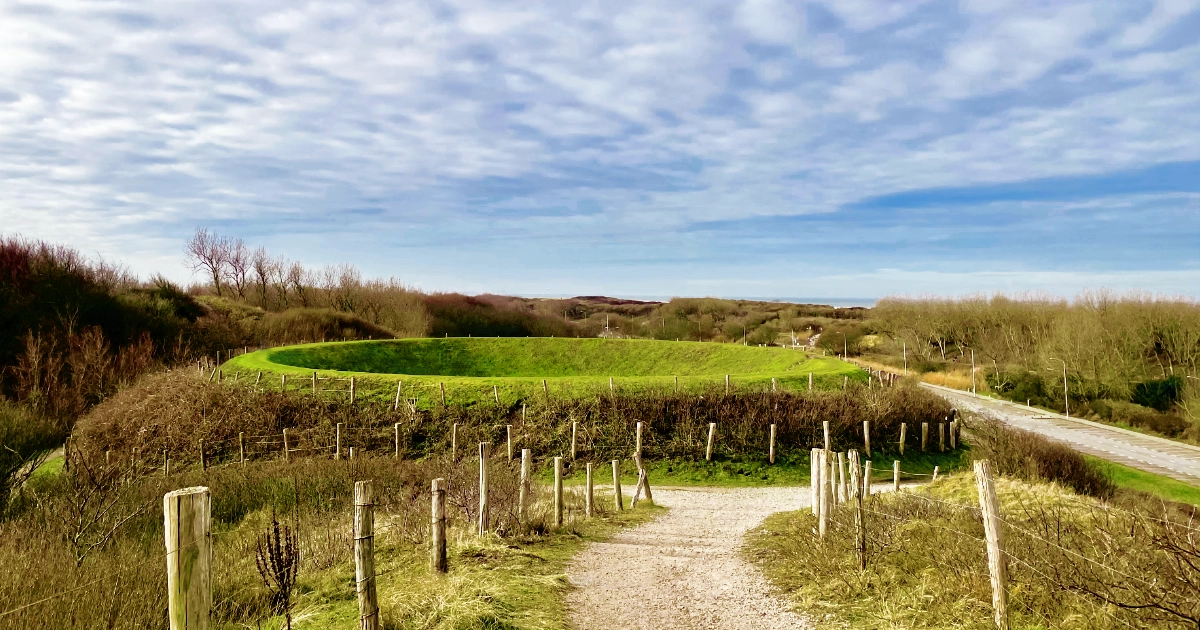Art movement: Light and Space
Back in the 1960s, something quietly radical was taking shape on the sun-drenched edges of Southern California. The Light and Space art movement, part minimalist, part experiential, was less about objects and more about perception. Artists were suddenly less concerned with what you were looking at, and more with how you experienced it. Think glowing volumes of air, shifting shadows, silent encounters with space itself.
Using materials like resin, glass, cast acrylic, and light (lots of it), artists manipulated perception in a way that felt both futuristic and meditative. They were inspired by aerospace tech and precision engineering, after all, NASA was practically down the road. Out of this scene emerged James Turrell, one of the movement’s most visionary figures. He once said: “We eat light, drink it in through our skins.” And honestly, that feels about right.

James Turrell, an extraordinary life
James Turrell didn’t come out of nowhere. His story reads like something out of a novel. Raised in a deeply principled Quaker household, his father was an aeronautical engineer and educator, and his mother started as a physician before joining the Peace Corps. That quiet, deliberate Quaker influence runs through all his work: stillness, reflection, silence.
During the Vietnam War, Turrell made a strong choice—he registered as a conscientious objector, refusing military service on the grounds of personal conviction. Instead, he flew humanitarian missions in U2 planes over Laos. That perspective, from way up above the clouds—left a permanent mark on him. The sky wasn’t just something overhead anymore. It was something to enter, to shape, to frame.
Academically, Turrell was a bit of a wanderer in the best sense: he studied perceptual psychology, mathematics, geology, and astronomy before turning his attention fully to light as a medium in the late 1960s. His path wasn’t without bumps, he was jailed for a year for helping young men avoid the draft—but he stayed the course, eventually earning his Master’s in Fine Art from Claremont Graduate University in 1973.

Melting the curves of the earth
Fast forward to 1992. Turrell’s invited to speak at the International Conference of Landscape Architecture in The Hague. He walks in with a wild idea: an enormous elliptical crater carved into the dunes—a place to watch the sky as if it were a painting. People loved the concept but didn’t think it would actually be built. It was.
Today, tucked into the man-made dunes of Kijkduin in The Hague, you’ll find the Celestial Vault—a massive, earthen ellipse, 40 metres long and 30 metres wide, carved into the sand like a sacred bowl. It’s ringed by a five-metre-tall grassy wall, like a hidden amphitheatre open only to the sky.
You approach it slowly: first by wooden steps, then through a concrete tunnel that feels like a passage into another dimension. Inside, a wide stone bench invites two people to recline together. And when you do, something strange happens. The sky above begins to feel… curved. As if someone bent it gently, just for you.
That’s the illusion. The “vault” isn’t real. The sky hasn’t changed. You have.
A second bench on a higher dune gives you a panoramic view of the sea, beach, and countryside—a more classic landscape view, but still perfectly placed. Turrell brings earth, sky, and human perspective into one frame, and somehow, it just clicks.

Stroom
Stroom Den Haag, the organisation behind the realisation of the Celestial Vault, isn’t your average art space. They’re all about connecting art with the public domain, supporting works that shape how we live, think, and imagine together. They work with artists who push boundaries in public space, and this project is a beautiful example of that mission in action.
Where to see
Here’s the best part: you can visit any time, day or night. It’s open 24/7, free of charge, and needs nothing more than your presence. Just climb the dunes, walk the tunnel, lie back on that stone bench, and look up.
If you happen to be there on June 21, the summer solstice, you’re in for a treat. On that day, the sun aligns just right and illuminates the centre of the vault in a way that feels both cosmic and intimate. No ticket needed. Just you, the sky, and a little piece of carved earth.
Next time you’re in The Netherlands, and your mind’s craving stillness, or your eyes need something more than screens and buildings, go find the Celestial Vault. It’s a reminder that the sky isn’t always something you have to reach for. Sometimes, it’s already waiting, perfectly framed, just above your head.
